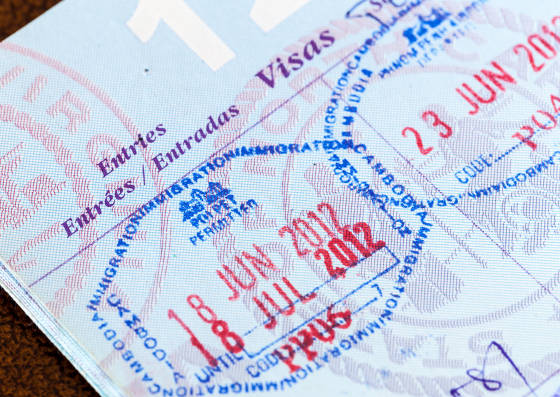
Cambodia Entry Stamps by steveheap/DepositPhotos
You may think that because you have a U.S. passport, it is all you need
for international travel, and for 173 countries that is mostly true.
Your U.S. passport will gain you entry to these countries without a
visa, but only for short stays. Most countries offer visa-free tourist stays
of 15 days to one year; 60 and 90 day stays are the most common. But
what happens if at the end of your authorized stay, you are not ready
to leave?
One option is to appeal to immigration for an extension
while you are in the country. This is easier in some countries than
others, depending on their immigration laws. It usually requires
visiting immigration offices in major cities, which are often crowded
with long waits, providing an adequate reason for extending your stay,
and paying extension fees. There is usually a limit to the number of
times you can request an extension, so you may not get what you want.
Another option is to overstay your tourist card. Once
the date of your authorized stay is reached, if you stay in the country
without making an effort to obtain an extension, you are considered
"out of status" which is a nice way of saying you are in the country
illegally. The consequences vary by country for being out of status,
but may include being fined (fines usually must be paid before exiting
the country), deported, prosecuted under the law, or possibly
restricted to a far out date or blacklisted altogether from returning
to the country. This is a pretty risky, not to mention illegal, option.
A third option is the ever popular visa run. Although
it is called a visa run, it does not actually involve a visa and is
used in countries where a valid passport is all that is required for entry.
In this instance, the tourist crosses a border into a neighboring
country and returns, therefore starting the authorized stay over again,
also known as restarting the clock. The risk with this option is that
immigration officers at the border may deny re-entry, particularly if
they think you are using visa runs to live in the country on a tourist
card.
Visa runs are nearly impossible in countries that put a limit on the
number of days you can be in the country in a calendar year or
establish a period of time you must be out of the country before
reentry. In other countries, it is such a common way for non-nationals
to live in a country that entire industries have sprung up around it.
For example, in Thailand
a Google search will return a number of companies that offer visa run
services. It has become so commonplace that Thai officials have
recently changed the rules to make it more difficult. Your safest bet
is to follow the immigration protocol for each country and if you find
you need a long-stay visa, call on an expeditor to help you get one.


